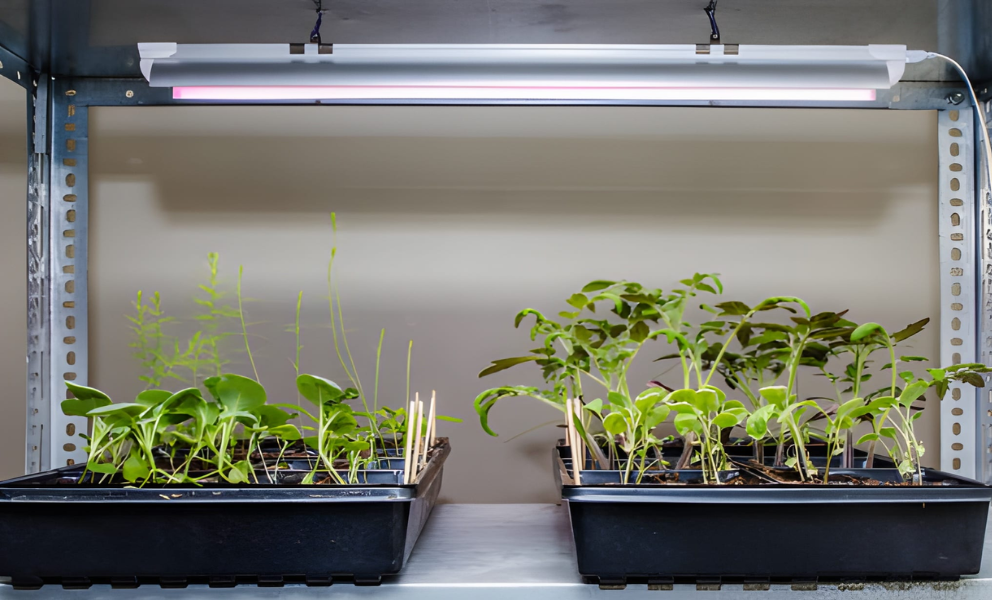I once burned my basil seedlings by placing my grow light too close—I didn’t know better back then. Figuring out How Far From Plants Should A Grow Light Be changed everything. If the light is too close, it can fry your plants; too far, and they stretch out, pale and weak. After a lot of trial, error, and research, I finally found that sweet spot—and I’m here to help you do the same. Whether you’re wondering how far away should a grow light be or need a grow light distance chart for LEDs, this guide has you covered. Let’s dial in your setup and grow strong, happy plants together.
Why Grow Light Distance Matters
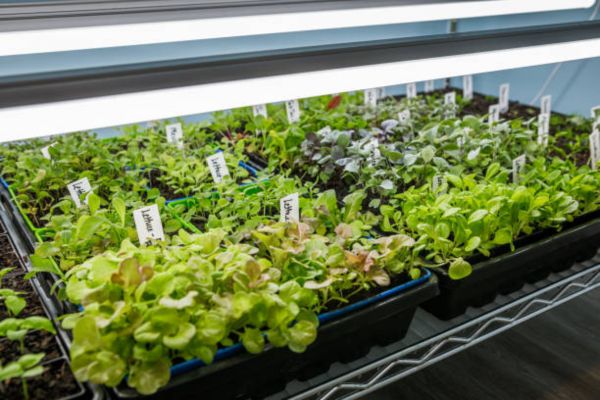
Light that’s too close can burn plants. Too far, and they stretch out and grow weak. That’s why distance matters. It’s one of the first things I messed up with my grow lights—and trust me, the results weren’t pretty.
Grow lights give off light and heat. That’s what plants need to grow. But if the light is too strong or too weak, plants won’t grow well. They need just the right amount of light to make food. That’s called photosynthesis.
So, how close should grow lights be to seedlings? For soft lights like LEDs or fluorescent bulbs, a distance of 2 to 6 inches is recommended. It keeps the light strong but safe. Once I tried this, my seedlings stopped leaning and got thicker stems.
How far away should a grow light be? That depends on the type of light and the plant. However, a small change in height can have a significant impact on growth. I saw it myself—just one inch closer, and my plants grew stronger fast
Factors That Affect Grow Light Distance
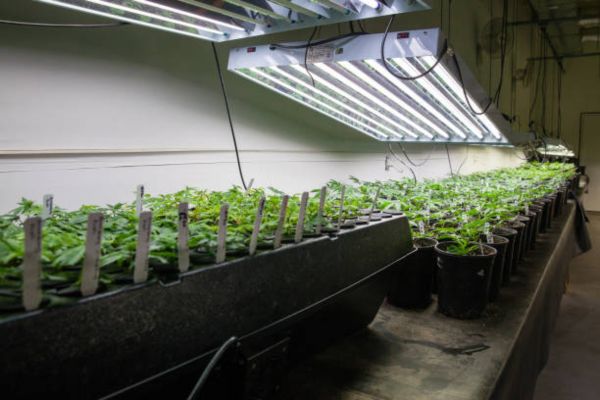
Type of Grow Light
Not all grow lights work the same. LEDs, fluorescent bulbs, HIDs, and incandescent lights all give off light differently. Some give off more heat than others, which changes how close they should be to your plants.
So, how far should LED grow lights be from plants? For low-watt LEDs, 6–12 inches is often enough. High-watt LEDs may need to be 18–24 inches away. Fluorescent lights are cooler, so they can sit 2–4 inches above seedlings. HID and incandescent lights give off much more heat, so you’ll want to keep them further away.
Here’s a quick chart for easy reference:
| Light Type | Seedlings | Vegetative Stage | Flowering Stage |
| LED (Low-Watt) | 6–12″ | 12–18″ | 16–24″ |
| LED (High-Watt) | 18–24″ | 24–30″ | 30–36″ |
| Fluorescent | 2–4″ | 4–6″ | N/A |
| HID | 24–36″ | 36–48″ | 48–60″ |
Tip: Bookmark this grow light distance chart (LED & others) to check whenever you adjust your setup.
Plant Type & Growth Stage
How close should grow lights be to seedlings? Seedlings need light that’s close but gentle. For them, low-watt LEDs or fluorescent bulbs 2–6 inches away work best. Too far, and they stretch. Too close, and they burn.
As plants grow bigger, they can handle more light. In the vegetative stage, increase the distance a bit. Flowering plants usually need strong light but at a safer distance to avoid heat damage.
Greens and herbs grow well with softer light. Tomatoes or flowering plants need brighter light and more space between the light and leaves.
Wattage and Lumens
Higher watt = more heat. That means more distance. A 300W LED may sit 18 inches above your plants, while a 100W can sit closer.
What if your light doesn’t list watts clearly? Look for lumens or PAR value instead. These show how much usable light your plant gets.
How far away should a grow light be based on power? As a rule:
- Low watt (50–100W) → 6–12 inches
- Medium watt (150–300W) → 12–24 inches
- High watt (400W+) → 24–36 inches
Always check heat with your hand—if it feels hot to you, it’s too hot for the plant
Grow Light Distance Chart (LED & Others)
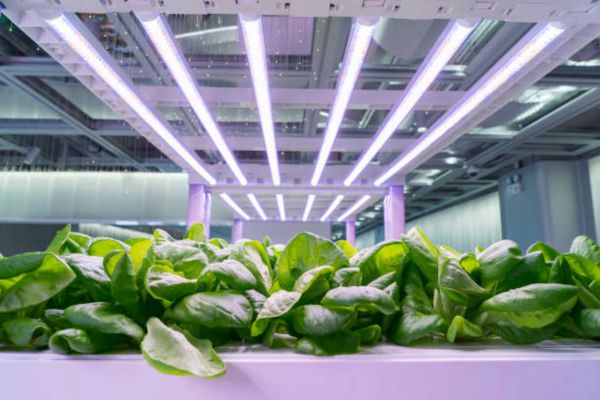
Not sure how far your grow light should be from your plants? Use this simple chart to find the best distance based on light type and growth stage. It’s your go-to cheat sheet for healthy, happy plants.
Grow light distance matters. Too close, and you risk burns. Too far, and your plants may stretch and weaken. This chart gives you a clear starting point.
| Light Type | Seedlings | Vegetative Stage | Flowering Stage |
| LED (Low-Watt) | 6–12″ | 12–18″ | 16–24″ |
| LED (High-Power) | 18–24″ | 24–30″ | 30–36″ |
| Fluorescent | 2–4″ | 4–6″ | N/A |
| HID (High-Intensity) | 24–36″ | 36–48″ | 48–60″ |
Tip: Start with the lower range and watch how your plants respond. Adjust if they start leaning or curling.
Adjust the height weekly as your plants grow taller. This keeps the light at the best distance and avoids damage or weak growth.
How to Measure & Adjust Grow Light Distance
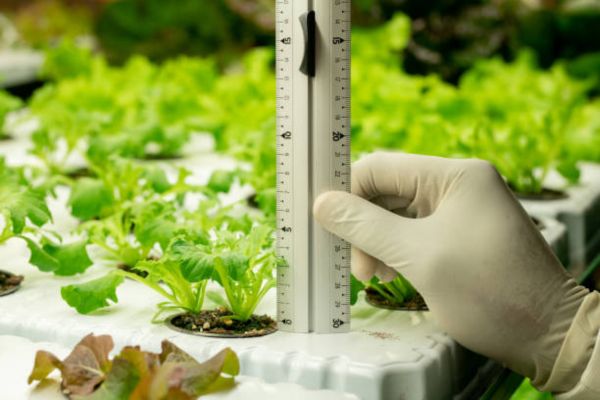
So, how far should light be from plants? Here’s a simple way to find out: use the back of your hand. Place it under the grow light at plant level. If it feels warm after 30 seconds, the light is too close. If it feels cool or weak, you may need to lower the light.
Want something more precise? Use a PAR meter. It tells you how much usable light (Photosynthetically Active Radiation) your plant is getting. Most plants grow well with 200–800 µmol/m²/s depending on their stage. But if you don’t have a meter, don’t worry—the hand test works well for most home growers.
Adjust the light every week as your plants get taller. Keep the same distance from the top of the plant—not from the pot.Here’s what I do: I installed a simple pulley system. It lets me raise and lower my GooingTop LED grow lights without touching the setup. It saves time and keeps my plants safe from burns or stretching.
Signs Your Grow Light Is Too Close or Too Far
How close do grow lights need to be? Your plants will tell you. You just have to know how to read the signs.
Too close? Watch for yellow leaves, burnt tips, or curling edges. These are signs of light burn. It often happens with strong LEDs placed too low or left on too long.
Too far? You’ll see long, thin stems and pale leaves. That’s a classic sign of light starvation. Your plants are stretching to reach the light. Seedlings especially suffer from this.
Fix it fast. If the light is too close, raise it a few inches. If it’s too far, bring it down slowly—an inch or two at a time. Always check again after a day or two to see how your plants react.
My Best Tips for Healthy Indoor Plant Growth
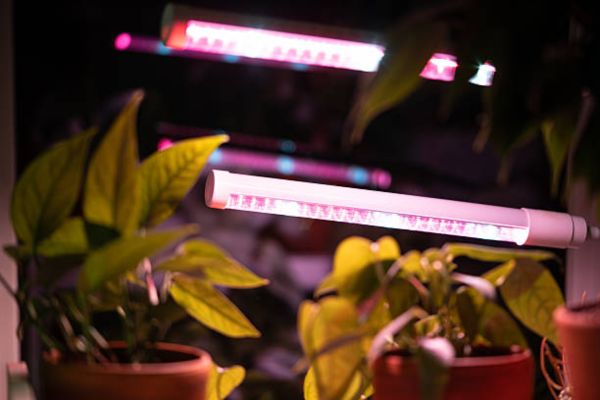
Want strong, bushy plants? These small habits can make a big difference.
Keep a distance log. Write down how high your light is and how your plants react. If something goes wrong later, you’ll know what to adjust.
Rotate your plants weekly. Light can hit one side more than the other. Turning them helps leaves grow evenly and stems stay strong.
Use a timer for your grow lights. Most plants need 12–16 hours of light a day. Too much or too little throws off their rhythm.
Pro tip: I added a cheap outlet timer to my setup—and it changed everything for my indoor herbs. No more guessing, no more stress.
Combine natural sunlight with grow lights if you can. A south-facing window plus a good LED setup can do wonders—especially in winter
FAQs
Can grow lights be too close to plants?
Yes. If a grow light is too close, it can burn leaves or cause heat stress. Always check by placing your hand at plant level—if it feels hot, it’s too close.
How do I know if my grow light is too far?
If your plants are stretching, leaning, or growing slowly, the light is likely too far. Lower it a bit and check again in a few days.
Does light distance change as the plant grows?
Absolutely. As plants grow taller, adjust the light upward to keep the same distance from the top leaves. This avoids light burn and keeps growth steady.
Final Thoughts
Finding the right grow light distance can feel tricky at first—but it gets easier. 🌱 Just remember the basics: your light type, your plant’s stage, and how close or far the light needs to be.
Some lights run hot. Some plants need more space. And sometimes, even a 2-inch change can fix droopy stems or burnt tips. It’s okay to adjust and experiment. That’s how you learn what works best in your space.

